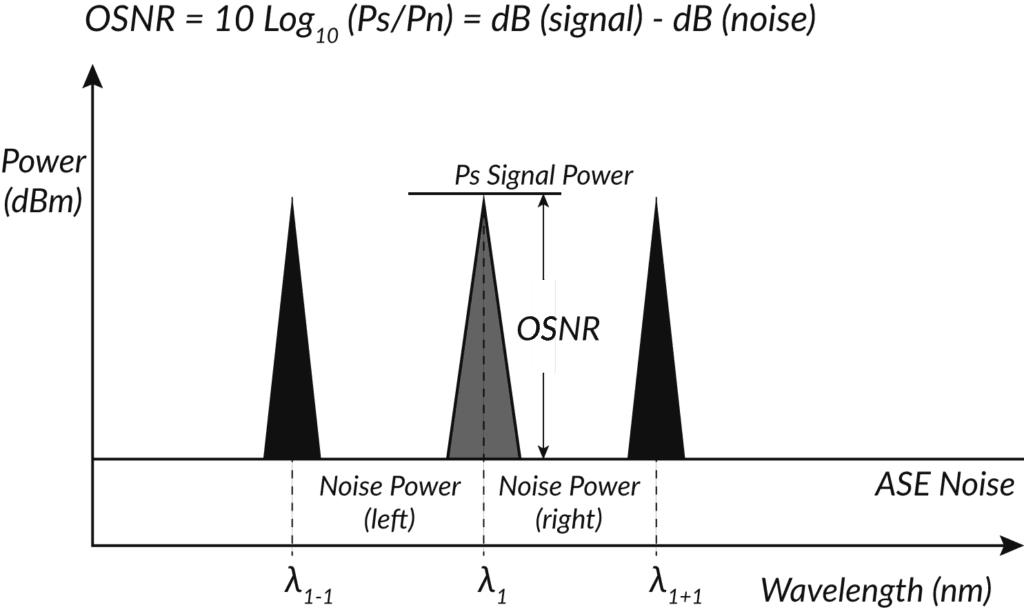OSNR meaning and calculation
Optical signal-to-noise ratio (OSNR) is used to quantify the degree of optical noise interference on optical signals. It is the ratio of service signal power to noise power within a valid bandwidth.
When the signal is amplified by the optical amplifier (OA), like EDFA, its optical signal to noise ratio (OSNR) is reduced, and this is the primary reason to have limited number of OAs in a network.
The OSNR values that matter the most are at the receiver, because a low OSNR value means that the receiver will probably not detect or recover the signal. The OSNR limit is one of the key parameters that determine how far a wavelength can travel prior to regeneration.
OSNR serves as a benchmark indicator for the assessment of performance of optical transmission systems. DWDM networks need to operate above their OSNR limit to ensure error – free operation. There exists a direct relationship between OSNR and bit error rate (BER), where BER is the ultimate value to measure the quality of a transmission.


